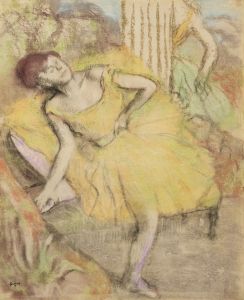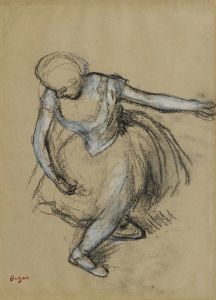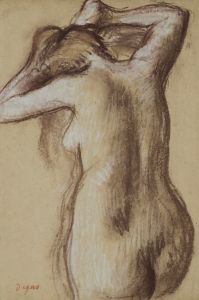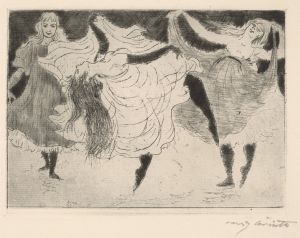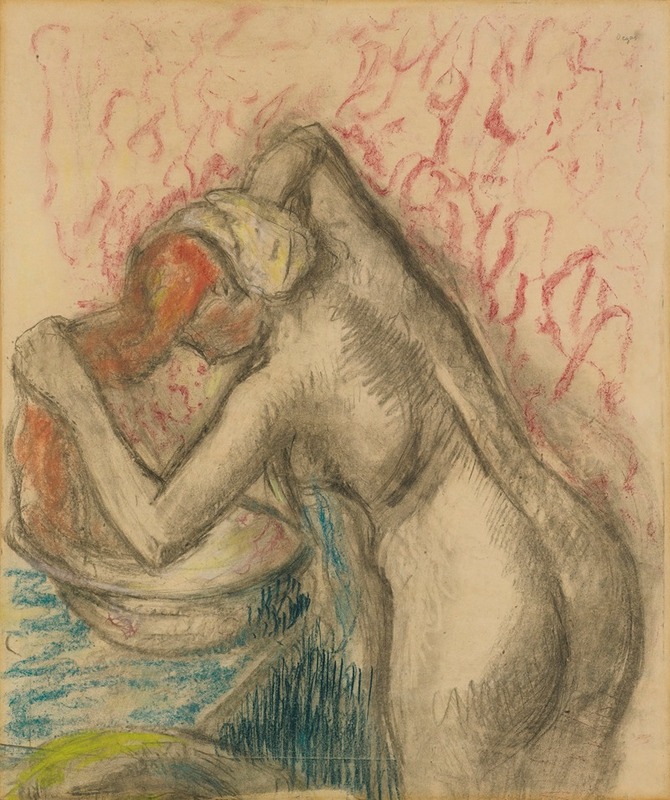
Après Le Bain
A hand-painted replica of Edgar Degas’s masterpiece Après Le Bain, meticulously crafted by professional artists to capture the true essence of the original. Each piece is created with museum-quality canvas and rare mineral pigments, carefully painted by experienced artists with delicate brushstrokes and rich, layered colors to perfectly recreate the texture of the original artwork. Unlike machine-printed reproductions, this hand-painted version brings the painting to life, infused with the artist’s emotions and skill in every stroke. Whether for personal collection or home decoration, it instantly elevates the artistic atmosphere of any space.
"Après Le Bain" (After the Bath) is a painting by the renowned French artist Edgar Degas, who is widely recognized for his contributions to the Impressionist movement. Degas, born on July 19, 1834, in Paris, France, is best known for his works that capture the human form in motion, particularly focusing on dancers, women at their toilette, and scenes of everyday life.
"Après Le Bain" is part of a series of works by Degas that depict women bathing, a subject he explored extensively throughout his career. This particular painting, created around 1895-1900, showcases Degas' mastery in rendering the human body with a sense of intimacy and realism. The work is executed in pastel, a medium Degas favored later in his career for its ability to convey texture and color with immediacy and vibrancy.
The composition of "Après Le Bain" features a woman in a private moment, drying herself after a bath. Degas' approach to this subject is both voyeuristic and respectful, capturing the natural, unposed beauty of the female form. The woman's posture, with her back turned to the viewer, emphasizes the curves and contours of her body, highlighting Degas' skill in anatomical accuracy and his keen observation of human movement.
Degas' use of pastel in "Après Le Bain" allows for a rich interplay of light and shadow, creating a sense of depth and volume. The soft, blended strokes of pastel give the skin a lifelike quality, while the background remains relatively abstract, focusing the viewer's attention on the figure. This technique reflects Degas' interest in Japanese prints, which often feature simplified backgrounds to emphasize the main subject.
Throughout his career, Degas was known for his innovative compositions and his ability to capture fleeting moments with precision. "Après Le Bain" is a testament to his dedication to studying the human form and his ability to convey the subtleties of everyday life. The painting also reflects Degas' fascination with the private, often unseen aspects of women's lives, presenting a candid and unidealized view of his subjects.
Degas' exploration of the theme of women bathing can be seen as part of a broader trend among Impressionist artists to depict modern life in all its facets. His works in this genre are characterized by their attention to detail, their sensitivity to the nuances of light and color, and their ability to convey a sense of immediacy and intimacy.
"Après Le Bain" is held in various collections, with several versions and studies of the theme existing in museums and private collections around the world. Degas' works continue to be celebrated for their technical brilliance and their insightful portrayal of human nature.
In summary, "Après Le Bain" by Edgar Degas is a significant work that exemplifies the artist's skill in capturing the human form and his innovative use of pastel. It remains an important piece within the context of Degas' oeuvre and the broader Impressionist movement.











